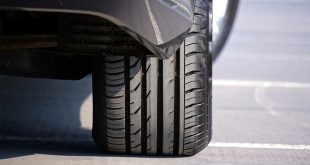Knowing where the car battery fuse is located is necessary for troubleshooting electrical problems in your vehicle. The car battery fuse serves as a safety measure, limiting excessive current flow and protecting the electrical system of your car. In this blog post, we’ll look at the usual locations of vehicle battery fuses and offer practical tips to make finding and replacing them easier.
Engine Compartment Fuse Box
The primary fuse box, which includes numerous fuses, including the one for the car battery, is typically located in the engine compartment of vehicles. Look for a black plastic box with a cover that can be removed; these are typically placed close to the firewall or next to the battery. You will see a diagram. This displaying the fuse positions and their corresponding functions. This can be found when the lid is opened. The fuse for the vehicle’s battery is frequently marked “Main” or “Battery.”
Example: Consider that you drive a Honda Civic. The engine compartment fuse box in this instance is normally found on the driver’s side, close to the battery. The fuse for the car battery is often a sizable square fuse with a high amperage rating, like 100A or 120A.
Interior Fuse Boxes
Additional fuse boxes may be found within some cars, usually under the dashboard, in the glove box, or even in the trunk. These interior fuse boxes could additionally have fuses for the vehicle’s battery.
Example: Consider a Toyota Camry. On the driver’s side of this model, there is an inside fuse box located beneath the dashboard. It’s likely that the car battery fuse is marked “AM1” or “ALT-H.”
Consult the Owner’s Manual
Always refer to your vehicle’s owner’s manual for absolute accuracy. It offers thorough details on the locations of the fuse boxes, the fuse ratings, and the precise fuse designations for your individual make and model. Your go-to guide for locating the car battery fuse and understanding its function will be the owner’s manual.
Example: The owner’s manual for your Ford F-150 will guide you to the central junction box, which is under the passenger-side dashboard. The vehicles battery fuse may be referred to as a “Battery Saver Relay” or “Battery Junction Box.”
Replacing the Car Battery Fuse
If you suspect a faulty car battery fuse, follow these general steps to replace it:
- Turn off the ignition and disconnect the negative terminal of the battery to prevent any electrical mishaps.
- Locate the fuse box containing the car battery fuse.
- Use a fuse puller or a pair of needle-nose pliers to remove the faulty fuse.
- Insert a new fuse of the same rating into the designated slot.
- Reconnect the negative terminal of the battery.
- Test the electrical system to ensure proper functionality.
For the purpose of diagnosing electrical challenges with your vehicle, you must be aware of where the car battery fuse is located. You can quickly find and change out the car’s battery fuse if necessary by becoming familiar with the normal locations of fuse boxes and reviewing your owner’s manual. To ensure the job is completed correctly and securely, always seek the help of a skilled mechanic if you are hesitant or uncomfortable conducting the task yourself. Visit HERE for the help of a specialist.
 Spot Dem Everything About Cars
Spot Dem Everything About Cars

